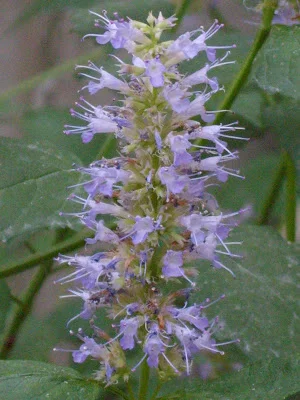The contents itself, while somewhat difficult to navigate at first, is informative and useful, each herb entry containing information for that plant’s common, scientific, and folk names, associated gender (masculine/feminine), ruling planet, element, and sometimes deity, and associated magical uses, rituals, and powers.
Botany After Dark Podcast, Episode 1: The Morning Glory, +BONUS Waffle and Plans
Welcome to the experiments in voice editing and mic use that has been my life for the past week and a half.
In today's episode, we dive into the weird and wonderful world of the morning glory, specifically the Mexican morning glory (tlitliltzin, Ipomoea. tricolor), a vibrant blue and featured in the episode artwork, and the Beach moonflower (Ipomoea. violacea). Join me in discovering the... altered states and effects of this plant.
Some Updates and General Life Things
Hey, all! I wanted to come on here and let you know that I’ll be posting new articles shortly, but life, health, and new projects have kept me away. I’ve been sick off and on for the past two weeks, after a run-in with unlabeled butter in a bag of popcorn. Been dealing with bad head-cold symptoms ever since. I’m feeling loads better now, though so that’s a positive. Now my system just has to re-calibrate… again.
In other news, I’ve launched a new podcast. By the time this is posted, it should be linked in the upper right corner of the screen, but I’ll put a link below anyway. It’s entitled “Botany After Dark” and discusses the dark mysteries of the plant world. Here, we explore the darker and more potentially polarizing, side of botany.
New episodes will be uploaded every Wednesday or Thursday. Enjoy.
Kate
https://botanyafterdark.pinecast.co
California Poppies (Eschscholzia californica)
Hail and well met, everyone!
So, I’ve been posting here and uploading largely separate content on my YouTube channel (https://www.youtube.com/Ethnobotanicam). I’m experimenting with still posting on the various platforms I currently use (Youtube, Instagram and the like), but cross-posting here as a method of aggregating all my botanical content into one place. Let me know what you think. Have a fab day, everyone, and happy LGBTQ+ Pride Month.
Kate
What's the Statice, Rose Parade?
Apples of Mabon
May the Green Forth be With You
Bring in the May
Fly Agaric (Amanita muscaria)
Dandelion: Healing Your Gut Since 659 B.C.E.
Giant Hyssop (Agastache rugosa)
Purple Giant Hyssop, Wrinkled Giant Hyssop, Korean Mint, Blue Licorice, huò xiāng (藿香), bangsnnip (방아잎), Patchouli herb--whatever regional name is chosen, they all refer to the same plant: Agastache rugosa (Fisch. & C.A.Mey.) Kuntze. For purposes of this post, the two most abundant names I found were (Purple) Giant Hyssop and Korean Mint, hence the top-title billing.










